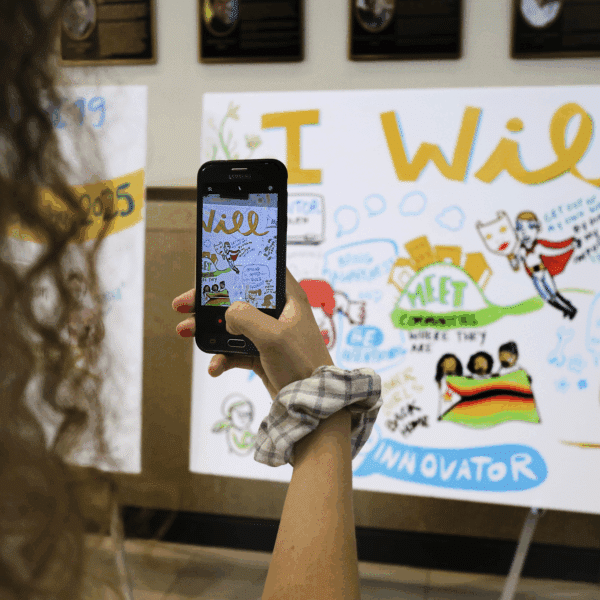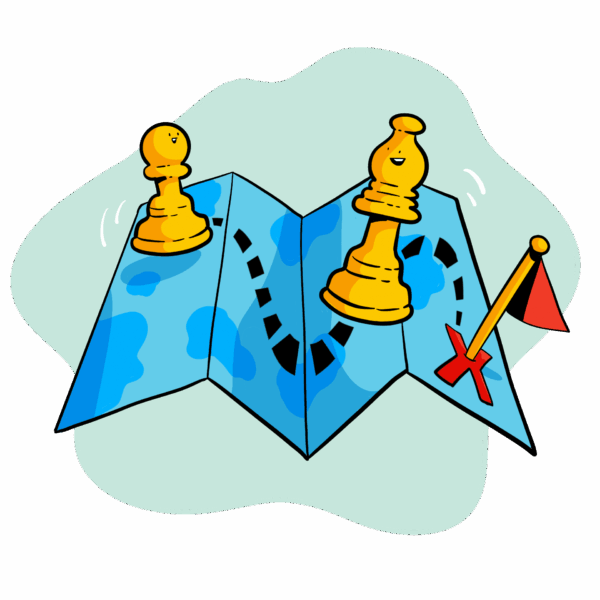Ever sat through a presentation where someone explained a brilliant strategy—but by the end, no one could quite remember what it was?
You’re not alone. Complex ideas get lost in translation all the time. Not because people aren’t smart enough to understand them, but because our brains aren’t wired to hold onto abstract concepts delivered through walls of text or endless bullet points.
That’s where visual frameworks come in. They’re the bridge between “I think I get it” and “Oh, now I see it.” And once people see it, they remember it, share it, and—most importantly—act on it.
Let’s explore how visual frameworks turn complexity into clarity, and how you can start using them to make your ideas stick.
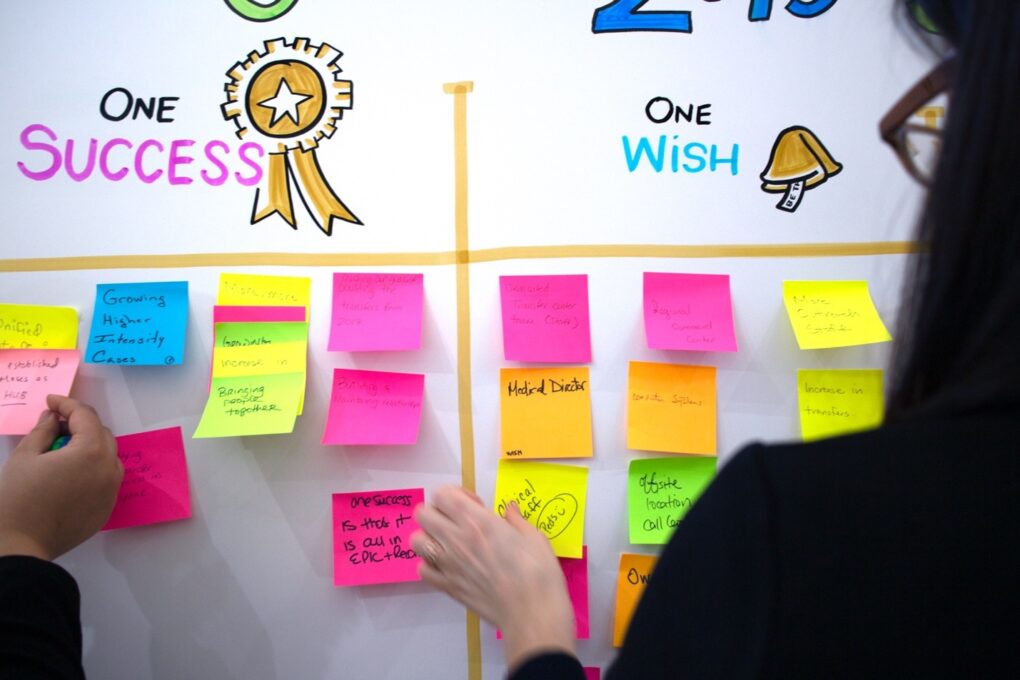
What Are Visual Frameworks and How Do They Work?
A visual framework is a structured diagram or model that organizes information spatially. Instead of listing ideas sequentially (like in a document), visual frameworks show relationships, hierarchies, and flows all at once.
Think of it like the difference between reading turn-by-turn directions and looking at a map. Both get you there, but the map lets you see the whole journey, understand alternative routes, and make informed decisions.
Visual frameworks work because they leverage how our brains naturally process information:
- Pattern recognition: We spot connections faster when we see them laid out visually
- Spatial memory: We remember where things are positioned relative to each other
- Reduced cognitive load: Visuals chunk information into digestible pieces
The result? People grasp complex ideas faster, retain them longer, and align around them more

Why Visual Frameworks Help People Grasp Complex Ideas
Turning Abstract Concepts into Tangible Models
Abstract strategies like “customer-centricity” or “digital transformation” mean different things to different people. A visual framework gives these concepts shape and structure.
When you map out what customer-centricity actually looks like—showing touchpoints, pain points, and moments of delight—suddenly everyone’s on the same page. The abstract becomes concrete.
This is the foundation of what we call The ImageThink Method™—using visual thinking to transform how teams communicate, collaborate, and solve problems. By making ideas visible, we help organizations move from confusion to clarity.
Bridging the Gap Between Strategy and Action
One of the biggest challenges leaders face is translating high-level strategy into day-to-day action. Visual frameworks create that bridge.
A well-designed framework shows not just what needs to happen, but how the pieces connect, where teams should focus first, and why each element matters. It’s the difference between “we need to innovate” and a clear innovation roadmap everyone can follow.
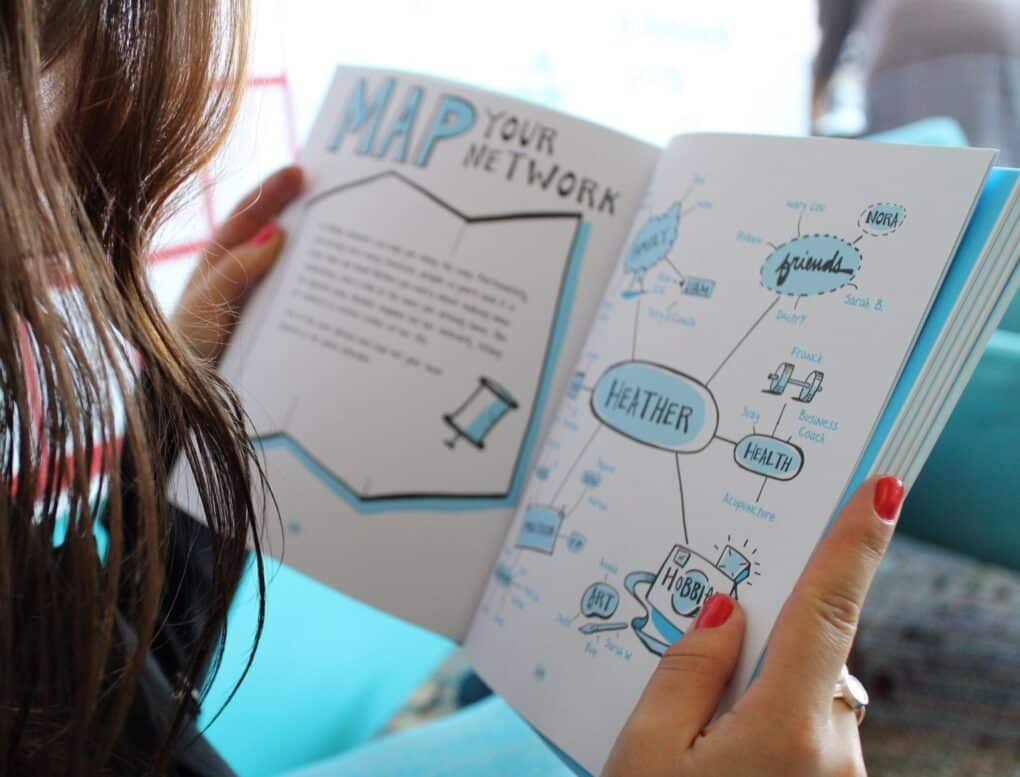
In her book Draw Your Big Idea, ImageThink founder Nora Herting explores how visual communication breaks down barriers and helps leaders articulate their vision in ways that inspire action. Visual frameworks are one of the most powerful tools in that toolkit.
Making Complexity Accessible to Everyone
Not everyone processes information the same way. Some people are verbal thinkers, others are visual learners. Visual frameworks level the playing field.
They simplify complexity without dumbing it down. A good visual framework respects the sophistication of your ideas while making them accessible to anyone in the room—from interns to executives.
Common Types of Visual Frameworks
Not all visual frameworks are created equal. The best one depends on what you’re trying to communicate. Here are three of the most effective types:
Process Flows and Diagrams
Best for: Showing sequences, workflows, and decision trees
Process flows map out how things move from point A to point B. They’re perfect for illustrating customer journeys, project timelines, or operational workflows.
Example: A patient journey map showing every touchpoint from initial symptoms through treatment and follow-up care.
Matrices and Quadrants
Best for: Comparing options, prioritizing decisions, and categorizing ideas
The classic 2×2 matrix (think: urgent vs. important) helps teams quickly sort through complexity and make strategic choices.
Example: An innovation matrix plotting ideas by impact vs. effort, helping teams identify quick wins and long-term bets.
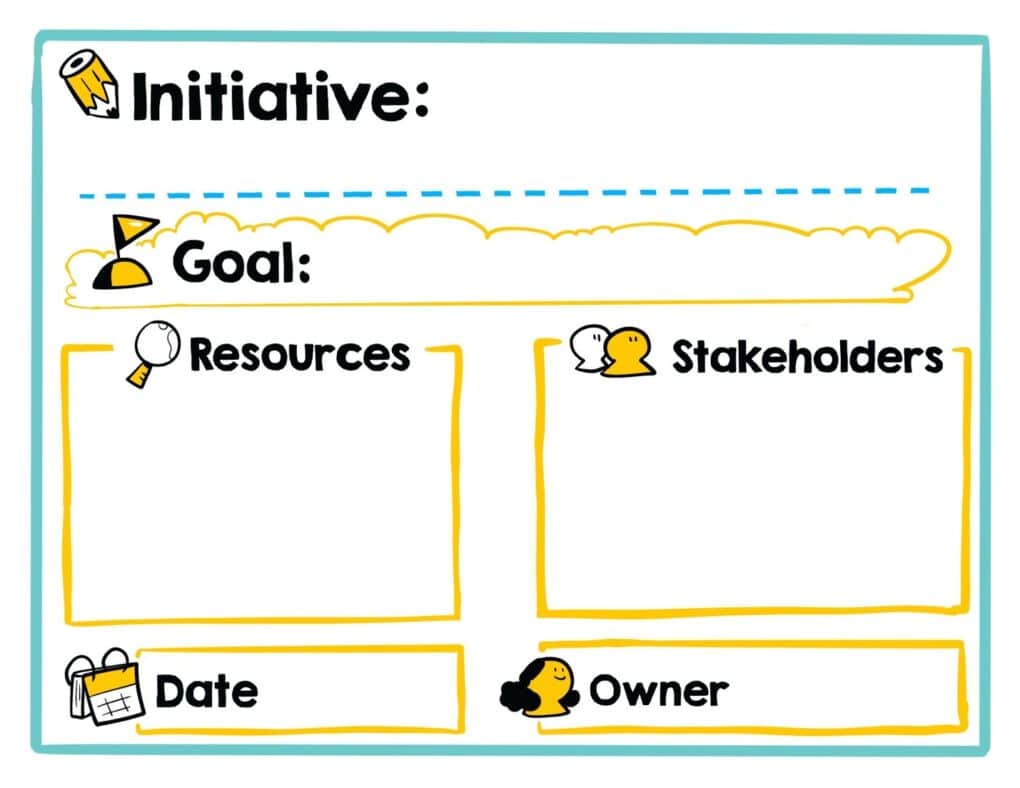
Ecosystem Maps and Journey Frameworks
Best for: Showing relationships, dependencies, and big-picture systems
These frameworks reveal how different players, departments, or factors interact within a larger system.
Example: A stakeholder ecosystem map showing how internal teams, partners, customers, and competitors all influence your go-to-market strategy.
Book a Visual Strategy Session
How to Design an Effective Visual Framework
Creating a visual framework isn’t about artistic talent—it’s about strategic thinking and clear communication. Here’s how to approach it:
1. Start with your objectives: Build everything around that.
2. Identify the key components: What are the main ideas, stages, or categories? These become your framework’s building blocks.
3. Show relationships, not just lists: How do these pieces connect? Use arrows, proximity, and groupings to reveal dependencies and flows.
4. Keep it: the urge to include everything. A good framework highlights what matters most and leaves out the noise.
5. Test for clarity: Show it to someone unfamiliar with the topic. If they can explain it back to you, you’ve succeeded.
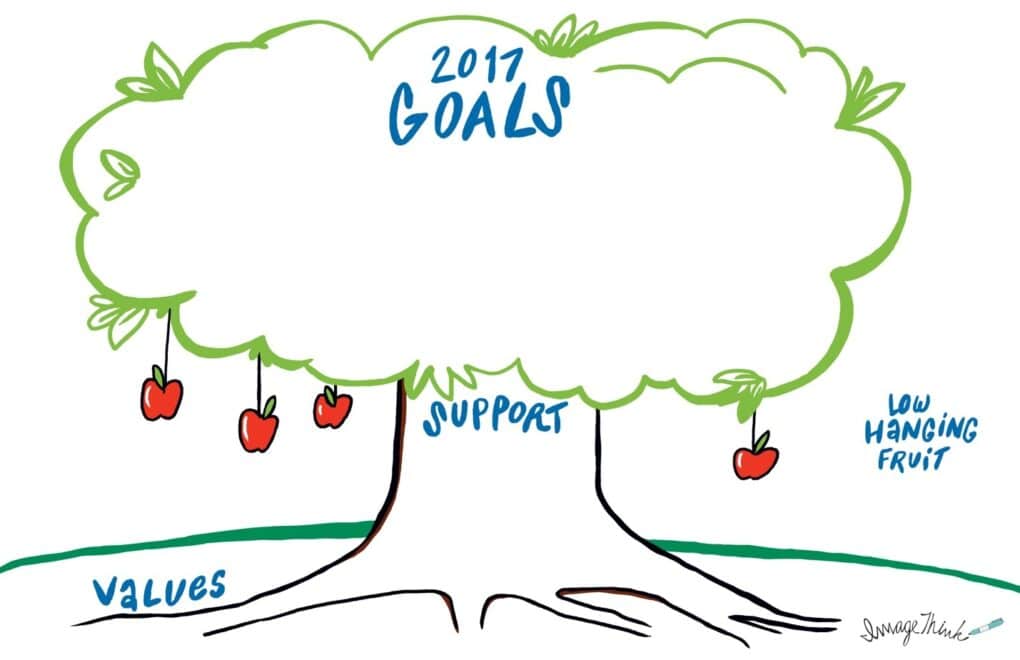
Examples of Visual Frameworks That Clarify Complexity
Let’s look at how visual frameworks work in real scenarios:
Strategic planning: Instead of a 40-page strategic plan, one company created a one-page visual showing their three-year roadmap with key initiatives, milestones, and success metrics. Teams could see how their work connected to the bigger picture.
Change management: A healthcare organization mapped their transformation journey as a visual timeline, showing current state, transition phases, and future state. It helped employees understand where they were in the process and what to expect next.
Product development: A tech company used a visual framework to map their product ecosystem, showing how different features, platforms, and user segments interconnected. It became the foundation for prioritization discussions.
At ImageThink, we’ve created visual frameworks for organizations ranging from Fortune 500 companies to nonprofits, helping them clarify everything from core values to multi-year strategic initiatives. Our Strategic Visuals service specializes in developing custom frameworks that become the foundation for organizational alignment and decision-making.
Applying Visual Frameworks in Meetings and Workshops
Visual frameworks aren’t just for presentations—they’re powerful tools for team collaboration and real-time problem-solving.
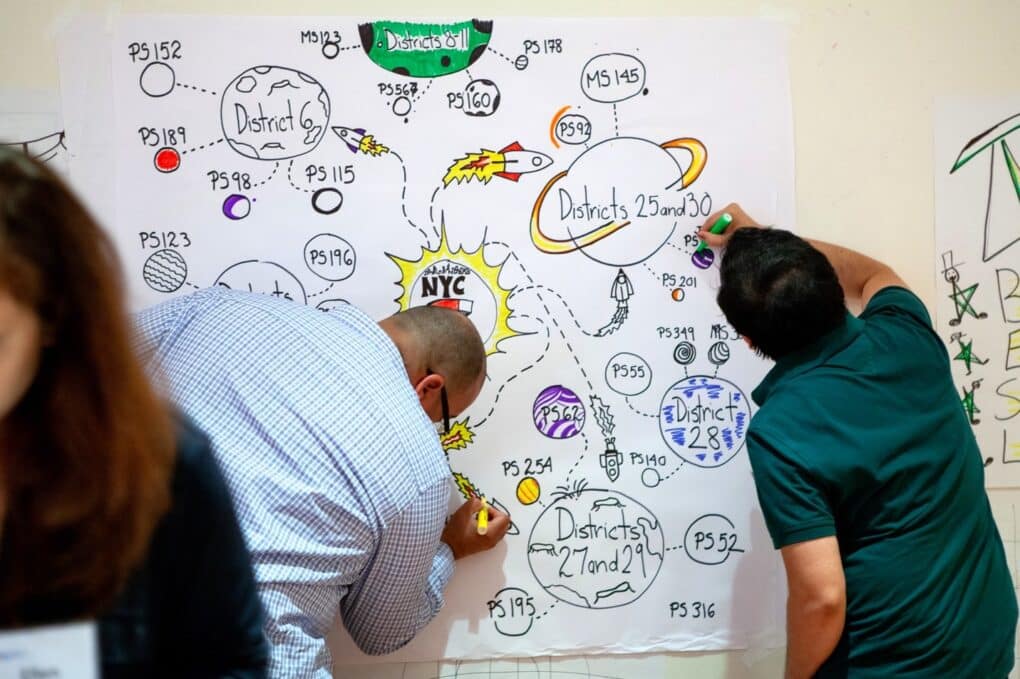
During brainstorming sessions
Start with a blank framework structure (like a matrix or journey map) and fill it in together. This gives the conversation structure while keeping it creative.
For alignment meetings
Use a visual framework to anchor the discussion. When everyone’s literally looking at the same picture, misalignment becomes obvious—and easier to resolve.
In strategic planning
Build frameworks collaboratively through visual facilitation. When teams co-create the visual, they develop shared understanding and ownership of the strategy.
This is where ImageThink’s visual facilitation services truly shine. Our trained facilitators don’t just capture what’s said—we help teams think through complex challenges in real time, building visual frameworks together that everyone can rally around. The ImageThink Method™ combines strategic questioning, visual thinking, and collaborative design to unlock breakthrough insights.
For stakeholder communication
Visual frameworks make it easier to bring new people up to speed quickly. Instead of lengthy explanations, you can walk them through one clear visual.
Conclusion: From Confusion to Clarity Through Visual Thinking
Complexity isn’t going away. If anything, the challenges we face—from digital transformation to organizational change—are only getting more intricate.
But complexity doesn’t have to mean confusion.
Visual frameworks give you a way to cut through the noise, align your teams, and turn abstract strategies into clear, actionable plans. They help people see what you mean, remember what matters, and move forward together.
The next time you’re facing a complex challenge, ask yourself: What would this look like as a visual framework?
You might be surprised how quickly complexity starts to click.
Ready to bring clarity to your next big initiative? Explore how ImageThink’s visual facilitation services and Strategic Visuals can help your team turn complexity into actionable frameworks using The ImageThink Method™.
Want to dive deeper into visual communication? Check out Nora Herting’s book Draw Your Big Idea for practical techniques you can start using today.

